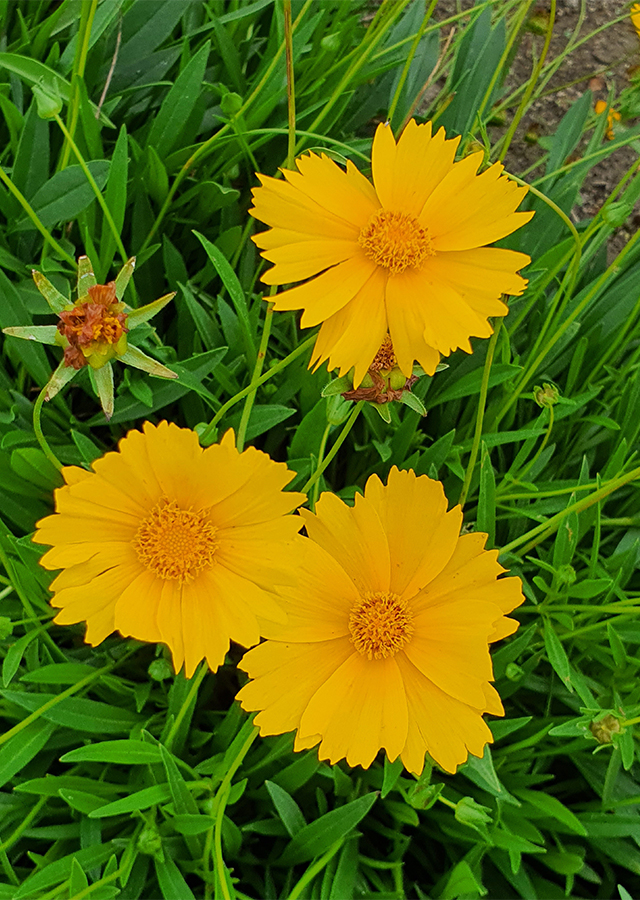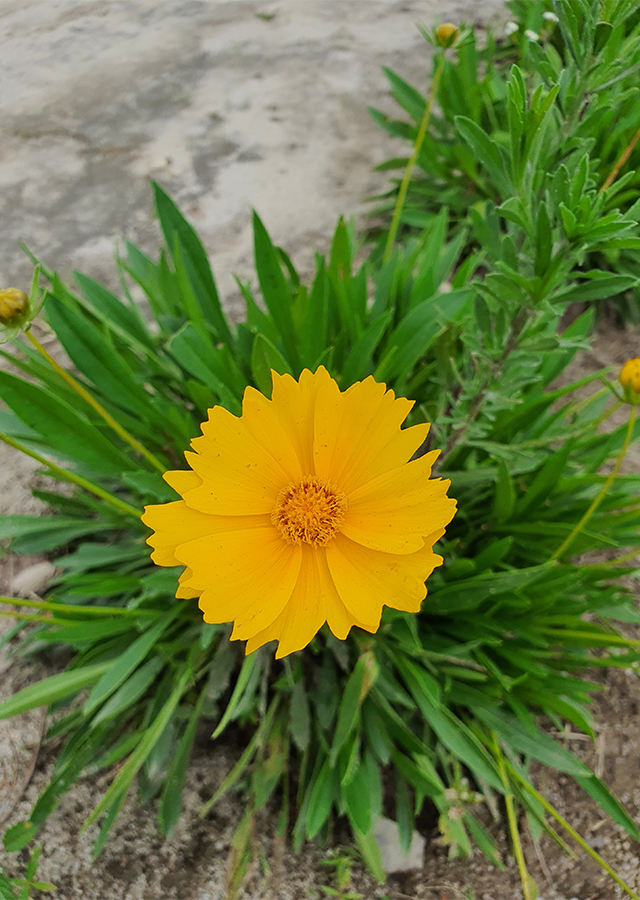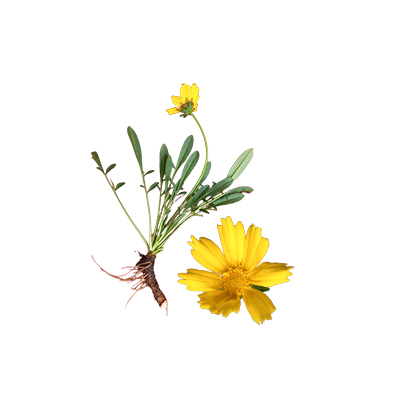Lanceleaf Coreopsis
Coreopsis lanceolata L.
Asteraceae
Location in our garden
Orchard



Synonym
Chrysomelea lanceolata Tausch
Coreopsis crassifolia Aiton
Leachia lanceolata (L.) Cass.
Habitus
Herbaceous. An evergreen perennial herb that grows 30-75 cm tall.
Part Used
Flowers
Roots
The Whole Plant
Growing Requirements
Full Sunshine
Need Shade
Drought Resistant
Habitat
Forest
Roadside
Grassland
Overview
Coreopsis lanceolata is native to the eastern and central parts of the United States and naturalized in Canada, the western United States, Mesoamerica, South America, South Africa, and eastern Asia. The genus name comes from the Greek words koris meaning "bug" and opsis meaning "like" in reference to the shape of the seed which resembles a bug or tick.
Vernacular Names
Jian ye jin ji ju (Chinese).
Agroecology
Can be found in sandy soils, prairies, glades, fields, ditches and roadsides, other disturbed sites. Best naturalized in native wildflower gardens, rock gardens, meadows or prairies. Coreopsis lanceolata easily grown in dry to medium moisture, well-drained soil in full sun. Thrives in poor, sandy or rocky soils with good drainage. Tends to sprawl, particularly if grown in moist and/or fertile soils. Crown rot may occur if grown in moist, poorly drained soils.Tolerant of heat, humidity and drought.
Morphology
- Stem - erect, branching stems at base.
- Leaves - basal and cauline on proximal 1/4-1/3(-1/2) of plant height; petioles 1-5(-8) cm; blades simple or with 1 or 2+ lateral lobes, simple blades or terminal lobes ovate-lanceolate or lanceolate to oblanceolate or linear-lanceolate, 5-12 cm × 8-15(-18+) mm. Peduncles (8-)12-20(-35) cm; calycular bracts ovate-lanceolate to linear-lanceolate or linear, 4-8(-12) mm; phyllaries deltate to dentate-lanceolate, about 8-12 mm, opposite, sometimes alternate near the top where the leaves are fewer. Some of the leaves are deeply cut, almost forming 3 leaflets. Lower basal leaves are mostly entire, while smaller stem leaves may be pinnately lobed.
- Flower - ray limbs yellow, ray flowers are 4-lobed, 15-30 mm. Disk corollas 6-7.5 mm, apices yellow. Achenes 2.6-4 mm.
- Fruit - cypselae, commonly lacking pappus awns associated with tickseeds that adhere to fibers and skin.
- Seed - resembles a bug or tick.
Cultivation
Generatively propagated by seed and vegetatively propagated by division of basal rosettes (clump division). In the fall, lift a clump from the outer edge of the plant and separate the rosette. Remove a few of the leaves to reduce moisture loss, replant, and water thoroughly.
Chemical Constituents
Polyacetylene glycoside, bidenoside C, (3S,4S)-5E-trideca-1,5-dien-7,9,11-triyne-3,4-diol-4-O-β-glucopyranoside, lanceoletin, 3,2'-dihydroxy-4-3'-dimethoxychalcone-4'-glucoside, 4-methoxylanceoletin, lanceolin, leptosidin, (2R)-8-methoxybutin, flavonoids (aurones, chalcones, flavones, flavanols, luteolin, and quercetin).
Traditional Medicinal Uses
- It has anticancer, anti-inflammation, anti-alergic, anti-oxidant, and antileukemic activities.
- It is used in the treatment of fever and diabetes.
Part Used
Reference Sources
- Flora of China. (No date). Coreopsis lanceolata Linnaeus. http://www.efloras.org/florataxon.aspx?flora_id=2&taxon_id=200023717. 04-02-2022.
- Kew Royal Botanic Gardens. (2021). Plants of the World Online: Coreopsis lanceolata L. https://powo.science.kew.org/taxon/urn:lsid:ipni.org:names:319152-2. 04-02-2022.
- Kim, Bo-Ram, et al. (2020). Constituents of Coreopsis lanceolata Flower and Their Dipeptidyl Peptidase IV Inhibitory Effects. https://pubmed.ncbi.nlm.nih.gov/32977609/. 04-02-2022.
- LADY BIRD JOHNSON WILDFLOWER CENTER. (No date). Coreopsis lanceolata. https://www.wildflower.org/plants/result.php?id_plant=cola5. 04-02-2022.
- Missouri Botanical Garden. (No date). Coreopsis lanceolata. https://www.missouribotanicalgarden.org/PlantFinder/PlantFinderDetails.aspx?kempercode=j880. 04-02-2022.
- North Carolina Cooperative Extension. (No date). North Carolina Extension Gardener PlantToolbox: Coreopsis lanceolata. https://plants.ces.ncsu.edu/plants/coreopsis-lanceolata/. 04-02-2022.
